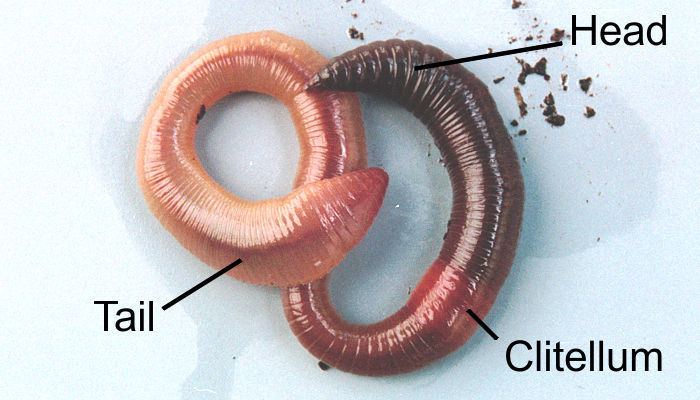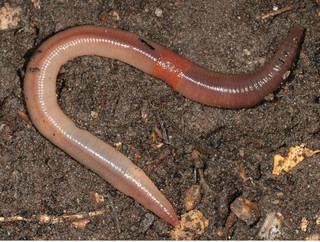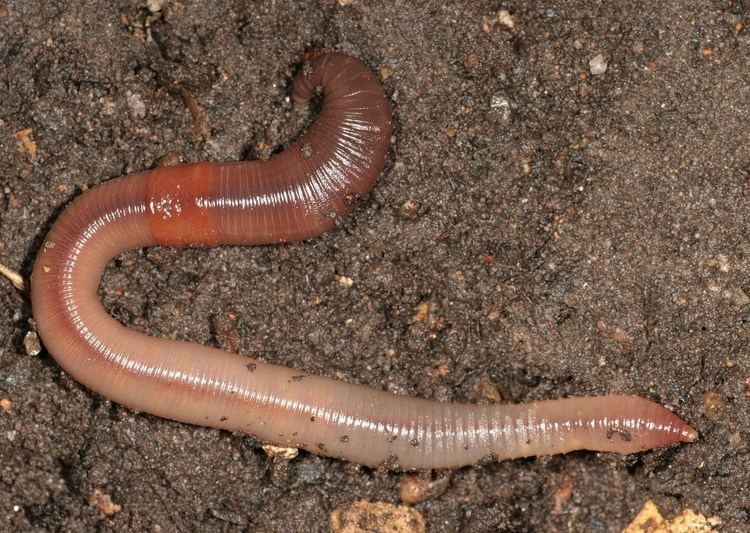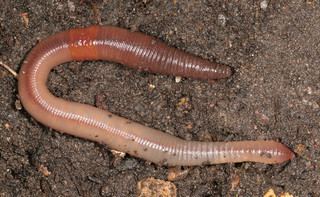Subclass Oligochaeta Higher classification Lumbricus | Genus Lumbricus Rank Species | |
Similar Lumbricus, Earthworm, Earthworms, Annelid, Eisenia fetida | ||
Common earthworm lumbricus terrestris
Lumbricus terrestris is a large, reddish worm species widely distributed around the world (along with several other lumbricids). In some areas where it is an introduced species, some people consider it a serious pest for outcompeting native worms.
Contents
- Common earthworm lumbricus terrestris
- Lumbricus terrestris
- Common names
- Biology
- As an invasive species in North America
- References
Through much of Europe, it is the largest naturally occurring species of earthworm, typically reaching 20 – 25 cm in length when extended (though in parts of southern Europe, the native species are much larger). In September 2012, a specimen was found in SW China measuring roughly 50 cm in length. In May 2016 a worm was found that was about 2 feet long. It has an unusual habit of copulating on the surface at night, which makes it more visible than most other earthworms.

Lumbricus terrestris
Common names

Because it is widely known, Lumbricus goes under a variety of common names. In Britain, it is primarily called the common earthworm or lob worm (though that name is also applied to a marine polychaete). In North America, the term nightcrawler (or vitalis) is also used. In Canada, it is also called the dew worm, or "Grandaddy Earthworm". In the rest of the world, most references are just to the scientific name, though with occasional reference to the above names.

Although this is not the most abundant earthworm, even in its native range, it is a very conspicuous and familiar earthworm species in garden and agricultural soils of the temperate zone, and is frequently seen on the surface, unlike most other earthworms. It is also used as the example earthworm for millions of biology students around the world, even in areas where the species does not exist. However, 'earthworm' can be a source of confusion, since in most of the world, other species are more typical. For example, through much of the unirrigated temperate areas of the world, the "common earthworm" is actually Aporrectodea (=Allolobophora) trapezoides, which in those areas is a similar size and dark color to L. terrestris.
Biology

L. terrestris is an anecic worm. That is, it forms temporary deep burrows and comes to the surface to feed, as opposed to burrowing through the soil for its food as most other earthworms do. An unusual habit of this species is to pull leaves into the mouth of its burrow where they partially decay before being eaten. While they generally feed on plant material, they have been observed feeding on dead insects and feces.
The natural lifespan of L. terrestris is unknown, though individuals have lived for six years in captivity.

In parts of Europe, notably the Atlantic fringe of northwestern Europe, it is now locally endangered due to predation by the New Zealand flatworm (Arthurdendyus triangulatus) and the Australian flatworm (Australoplana sanguinea), two predatory flatworms accidentally introduced from New Zealand and Australia. These predators are very efficient earthworm eaters, being able to survive for lengthy periods with no food, so still persist even when their prey has dropped to unsustainably low populations. In some areas, this is having a seriously adverse effect on the soil structure and quality. The soil aeration and organic material mixing previously done by the earthworms has ceased in some areas.
As an invasive species in North America
L. terrestris is considered invasive in the north central United States. It does not do well in tilled fields because of pesticide exposure, physical injuries from farm equipment and a lack of nutrients. It thrives in fence rows and woodlots and can lead to reductions in native herbaceous and tree regrowth.
